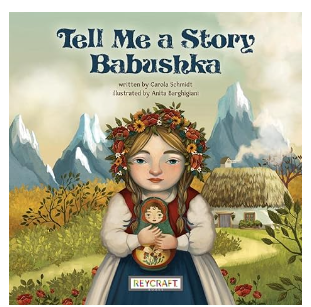|
This is an updated version of an article we ran in May 2019. Research at Princeton University on the neuroscience of storytelling inspires new enthusiasm for the soundness of character education that relies on "telling our stories." Dr. Hasson's latest research finds similar neural synchrony (described below) for adults and children involved in one-on-one, face-to-face play. Such synchrony facilitates development of the prefrontal cortex, which is key to learning, planning, and executive functioning. Did you know there is a “neuroscience of stories”? Experts in the fields of psychology and neurology are looking at what happens to the human brain when we are told a story. How does the brain react to this form of verbal communication, particularly when stories are told to a group? The results affirm something Core Virtues teachers have long intuited: the telling of stories creates a bond, and puts the student audience “on the same wavelength.” That facilitates communication and promotes harmonious interaction in the classroom. “It gives us a common language,” one teacher told me. We are now learning that this sense of “being on the same wavelength” when you listen to a good story, is literally true. Research scientists at Princeton University, led by Professor Uri Hasson, want to understand when our “cortical activity” is idiosyncratic (unique to individuals or to subgroups) and when are our responses are shared. Are there times when brain activity synchronizes, facilitating communication? Or is human brain activity largely idiosyncratic? At Professor Hasson’s lab, they’ve been investigating this for years, using functional magnetic resonance imaging (fMRI) and intracranial EEG (iEEG) recording to chart brain activity.  Not surprisingly, patterns of human brain activity are idiosyncratic in various situations, even when individuals are gathered as a group and even when they are listening to the same lecture. But when people in a group are told a story (such as one from “The Moth” radio hour) the group exhibits synchronized brain activity. For the time of the story, “brain coupling” takes place. Patterns of brain activity from the speaker are echoed or repeated in the minds of the listening audience, and the audience, composed of any number of individuals, aligns to the same wavelength. Measured brain responses show the activation of the same regions in the same way. This is known as "neural synchrony" and that synchronization dramatically facilitates human communication. Hasson’s lab conducted all sorts of experiments to determine whether such brain wave alignment had to do with sound of voice, sense of words, or a specific language. But when a given story was translated into Russian for another group of native speakers, the scientists got the same results: brain wave patterns that were both synchronized from speaker to audience, and nearly identical to patterns generated by the English speaker. (You can watch Dr. Hasson explain this in his TED talk at https://www.youtube.com/watch?v=FDhlOovaGrI) What does this sophisticated research have to do with character education, the Core Virtues Morning Gathering, and ultimately, creating a more civil and fruitful society? A lot. Go back to April with its focus on forgiveness. Imagine (or recall) the second grade teacher at Morning Gathering who begins to read Robert Coles’s The Story of Ruby Bridges to her fidgeting class. We all know that within seconds, the fidgeting dies down, and twenty little minds and hearts are tuned in to the story of the brave six-year-old girl in Louisiana, who, because of her skin color, was unwanted as a student in an all-white public school. The first African-American child to integrate the school in 1960, Ruby Bridges had to be escorted (for her own protection) by federal marshals while a crowd jeered, booed, spat and threw things. Once inside she prayed God would “forgive these people. Because even if they say those bad things, they don’t know what they are doing.” That took courage. That took largeness of heart. Every child in the room hangs on each word, identifying with the young protagonist. They are on the same wavelength. From then on, when the teacher points to the wisdom of forgiving classmates who may have called them names or unintentionally hurt them on the playground, they have a common frame of reference. Now when they talk about the need to respect classmates regardless of their skin color or clothes or the place they were born, the class has a common role model, and a shared commitment to higher goals based on a real-life story that moved minds and hearts in the same direction when they were all together.  See our review of this timely 2-6 book in May. See our review of this timely 2-6 book in May. The beauty of the Core Virtues approach to character education is that by regularly employing a treasure trove of stories (from history and literature) to exemplify the virtues, we build the common ground so essential to communication and fruitful interaction. We bring children’s hearts and minds together for a good goal, for human excellence. That’s what the virtues are: human excellences. The stories of respect, responsibility, diligence, generosity, courage, compassion, humility, hope, and more, move kids' hearts, and now we know, unite them in a profound way. For fifteen minutes three times a week, “brain coupling.” "Neural synchrony." Who knew? How wonder-ful. And as we think about divisions among us and our quest for a more civil future, that's also a source of hope and joy. Mary Beth Klee For the study referenced above on adult-baby sync up during one-on-one play and story time, see https://www.princeton.edu/news/2020/01/09/baby-and-adult-brains-sync-during-play-finds-princeton-baby-lab.
0 Comments
Your comment will be posted after it is approved.
Leave a Reply. |
AuthorWrite something about yourself. No need to be fancy, just an overview. Archives
July 2024
Categories |
